39 standard labels for chemical containers
ohs-workplacelabels | Environmental Health & Safety | Washington State ... There are also sections to record who transferred the chemical and the date it was transferred. Extra Small Label (Approx. 500 mL size or equivalent) TEMPLATE EXAMPLE Small Label (Approx. 1 L size or equivalent) TEMPLATE EXAMPLE Medium Label (Approx. 1 gallon size or equivalent) TEMPLATE EXAMPLE Large Label (Approx. 5 gallon size or equivalent) Information on hazardous chemical labels | Safe Work Australia A hazardous chemical is correctly labelled if it is packed in a container and has a label written in English. Pictograms and text on the label should be clear. The label must also be firmly fixed to the hazardous chemical's container. It should not be hidden or in a spot where it could be removed, such as on the lid. The label must include the:
Labeling secondary containers - JJKellerSafety.com If the chemical is going to be used only "in house," then the container is to be labeled in accordance with 1910.1200 (f) (6) . Label it with the product identifier, words, pictures, symbols, or a combination thereof. You can use HMIS or NFPA labels, or your own system, for in-house container labels as stated in 1910.1200 (f) (7).

Standard labels for chemical containers
GHS Label for Small Containers 2019 - ChemSafetyPro.COM GHS Label for Small Containers 2019. Little Pro on 2016-01-06 . It is difficult to label small containers given the fact that there is a lot of info that needs to be included on a GHS label and the outer surface area of the containers is always limited. Luckily, many countries allow some GHS label elements (i.e. hazard statements or precautionary statements) to be omitted from a label for ... Color Coded Labels for Chemical Storage and Segregation Select the Search button next to the field in order to open the color code list and assign the codes. 2. Print color code labels. The Actions menu enables users to print color code labels for the active location or Container record. Select Actions > Labels > Storage/Shipping Labels Select the COLOR_CODES Label format and click on the OK button. Chemical Labels | label.co.uk Labels for Chemicals; Roll Labels Polypropylene (PP) and polyethylene (PE) roll labels Labels for chemicals must be resistant to particular stresses so that they remain adhesive and clearly legible for as long as the container is in use.
Standard labels for chemical containers. Safety Labels for Hazardous Chemicals | NSTA The OSHA Laboratory Standard 29 CFR 1910.1450 details specific recommendations when labeling and storing hazardous chemicals within school laboratories. First of all, the laboratory standard [ (1910.1450 (h) (1) (i)] requires that labels on incoming containers not be removed or defaced. Incoming container refers to the original receptacle that ... GHS Labeling Requirements: The Definitive Guide [2021 Update ... - Luminer Primary Containers Primary chemical containers include: Bags; Cans; Bottles; Cylinders; Barrels; Drums; Boxes; These are the types of containers that are used to transport chemicals from the manufacturers. They should include all the relevant GHS requirements we covered above. Labels provided by suppliers should never be removed, modified, or defaced. Chemical Container Labeling - Northwest Safety The Hazard Communication Standard also is now known as the Right to Understand Standard, requires chemical manufacturers, importers, or distributors to ensure that each container of hazardous chemicals is labeled, tagged, or marked. Employers also have a responsibility for labeling and ensuring employees are trained on hazardous chemicals. Employer Labeling Responsibilities Labelling and packaging - Chemical classification - HSE Labelling and packaging Labels are there to help identify hazardous chemicals and explain what the hazards are and how to avoid them. Packaging is also important to ensure that chemicals are stored...
Labeling of Secondary Containers | Occupational Safety and Health ... Section 1910.1200(f)(6)(ii) requires that workplace labeling include "product identifier and words, pictures, symbols, or combination thereof, which provide at least general information regarding the hazards of the chemicals, and which, in conjunction with the other information immediately available to employees under the hazard communication program, will provide employees with the specific information regarding the physical and health hazards of the hazardous chemical." GHS Label Examples - ChemSafetyPro.COM Let's take a look at a few real GHS labeling examples to help you understand what a label looks like and how to put it on chemical packages or containers. The examples come from various sources. Standard GHS Label Standard GHS Label for Drum with DG Symbols GHS Labels for Inner and Outer Packagings GHS Labels for Drum with NFPA Ratings (for US) › sites › defaultBRIEF - Occupational Safety and Health Administration Hazard Communication Standard: Labels and Pictograms standard also requires the use of a 16-section safety data sheet format, which provides detailed information regarding the chemical. There is a separate OSHA Brief on SDSs that provides information on the new SDS requirements. All hazardous chemicals shipped after June 1, Container Labeling | Office of Environmental Health and Safety | ECU Labels of incoming manufactured products or chemicals must contain 6 key elements: Signal Word Pictograms Manufacturer Information Precautionary Statement(s) Hazard Statement(s) Product name or identifiers OSHA requires that labels on incoming containers of hazardous materials must not be removed or defaced until the container is empty and rinsed.
› chemical-container-labelsChemical Container Labels | EHS Chemical waste labels. Follow the How to Label Chemical Waste Containers instructions when disposing of hazardous chemical waste. All hazardous chemical waste mus t be labeled with the UW label shown unless the material is still in its original manufacturer’s container. Containers need to be labeled as soon as waste begins to be accumulated ... › news › chemical-storageProper Chemical Storage Guidelines for Containers in a Safety ... Sep 17, 2018 · Justrite safety cabinets feature exclusive Haz-Alert™ warning labels that inform all workers and first responders of its main chemical hazard – FLAMMABLE, ACID or HAZARDOUS. Justrite safety cabinets also come with a pack of 10 standard labels to identify specific contents. Never keep bottles of chemicals in a fume hood. Vapors from unsealed ... Labeling of small containers in the laboratory | Occupational Safety ... The Laboratory standard requires that labels on incoming containers of hazardous chemicals not be removed or defaced, per paragraph 1910.1450 (h) (1) (i), but does not have a specific labeling requirement for secondary containers of hazardous chemicals in a covered laboratory. › ehs › filesStandard Operating Procedure Chemical Storage Guidelines Page ... 8.9.1 Store in airtight containers in a dark, cool, and dry place. 8.9.2 Label containers with receiving, opening, and disposal dates. 8.9.3 Periodically test for the presence of peroxides. 8.10 Toxic Chemicals 8.10.1 Store according to the nature of the chemical, using appropriate security where necessary. 9.0 CONTINGENCIES:
4 Quick Tips to Help You Ace OSHA Secondary Container Labeling Tip #2: Play it Safe with GHS Labels for All Chemical Containers. OSHA HazCom standards allow for some limited flexibility when labeling secondary containers. For example, there are six clear elements required for primary containers but less strict, more nuanced specifications for secondary containers. It's important to note that the less ...
PDF HEALTH & SAFETY Chemical Container Labeling Label information must be legible and in plain English. 5 Chemical identity and hazard warning should already be printed on the manufacturer's container. 6 Recommended for best practices, though not required per regulation. 7 Required for chemicals that degrade over time, peroxide formers, and air and water reactives. Chemical Labeling Abbreviations
Storage Tanks: Labeling Requirements - Bluefield Process Safety While OSHA takes great pride in stating that its regulations are performance-based, the labeling requirements for shipping containers are quite prescriptive. There are six. Labels for shipping containers must include: Product identifier. Usually the name of the chemical, but it could be a code. Signal word.
Types of Containers and Labels - Quality OSHA Training Container labeling can be a very effective method to communicate the physical and health hazards of chemicals used in the ...
› sites › defaultHazard Communication Standard Labels Standard (HCS). All labels are required to have pictograms, a signal word, hazard and precautionary statements, the product identifier, and supplier identification. A sample revised HCS label, identifying the required label elements, is shown on the right. Supplemental information can also be provided on the label as needed.
PDF Chemical Labeling Standard for Secondary Containers - UGA 2.0 STANDARDS: 2.1: Labeling is not required of secondary containers which are intended only for the immediate use of the person who mixes the chemical or performs the transfer from the original labeled container. 2.2 All secondary chemical containers can have a National Fire Protection Agency (NFPA)
› chemical › mychemMyChem | EHS They help the University comply with federal, state and local hazardous material regulations, including Hazardous Material Storage and Use Permits, Hazard Communication, Community Right-To-Know and the Chemical Facility Anti-Terrorism Standard. MyChem can also be used to: Generate a chemical waste collection request
Hazard Communication - Container Labeling - OSHAcademy The various types of container labels that will be discussed include: Primary (Shipped) container labels are found on the shipping containers and containers received for use. Secondary (Workplace) container labels are found on employer containers, such as a smaller container used to store a chemical. For example, a spray bottle containing a chemical used during a manufacturing process would be a secondary container.
› title8 › 5194California Code of Regulations, Title 8, Section 5194. Hazard ... Sep 28, 2018 · (B) Any food, food additive, color additive, drug, cosmetic, or medical or veterinary device, including materials intended for use as ingredients in such products (e.g., flavors and fragrances), as such terms are defined in the Federal Food, Drug, and Cosmetic Act (21 U.S.C. 301 et seq.) and regulations issued under that Act, when they are subject to the labeling requirements of that Act and ...
Chemical Labelling Requirements | Environmental Health & Safety ... Requirements for labeling of chemical containers come from the Occupational Safety and Health Administration (OSHA) Hazard Communication and Laboratory Safety standards. All hazardous chemicals are required to be properly labeled (full chemical name) unless they are exempted by this standard. OSHA either exempts or does require labeling for certain chemicals that are covered under other regulations (they have there own labeling requirements).
Reference Guide to GHS Container Labels | UArizona Research, Innovation ... This guide uses the RLSS-recommended format for GHS-compliant labels. This guide explains the required aspects of a GHS chemical container label and provides examples of GHS-compliant labels for Methanol (CAS # 67-56-1) and a Phenol, Chloroform & 3-methylbutan-1-ol mixture (CAS # 108-95-2, 67-66-3, 123-51-3) from Sigma Aldrich.
GHS Container Labels | EHS | Research Administration The sample container label for acrolein below, shows the required elements for chemical labels under the GHS standard. What items are on a container label? Product Identifier (chemical name) - Must match the Product Identifier (chemical name) listed on the safety data sheet. Signal Word - Only Danger (severe) or Warning (less severe) can be used.
Rules for Proper Secondary Container Labeling - HSI Secondary Container Label Requirements. Employers must make sure that each container of hazardous chemicals in the workplace is labeled, tagged, or marked with either of the following: All the information specified for the labels on shipped containers. The hazard identification and words, pictures, symbols, or a combination that provide at ...
Requirements for Shipped Container and Workplace Labels As part of the 2012 revision of the Hazard Communication Standard, 29 CFR 1910.1200, OSHA adopted new hazardous chemical labeling requirements for shipped containers that align with the United Nations' Globally Harmonized System (GHS) of Classification and Labeling of Chemicals. The revised standard requires chemical hazard information to be ...

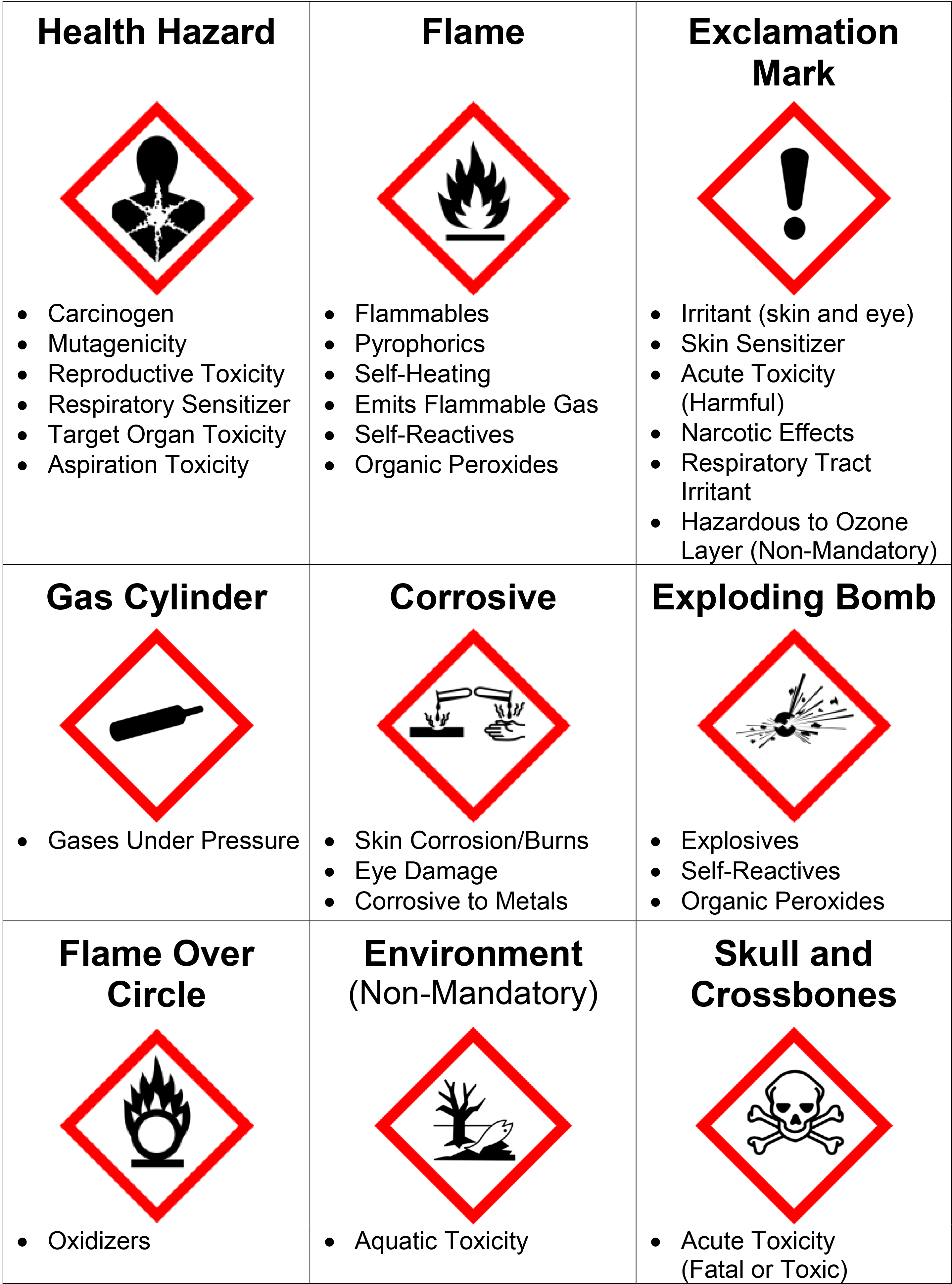
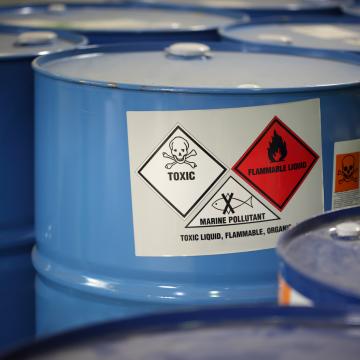


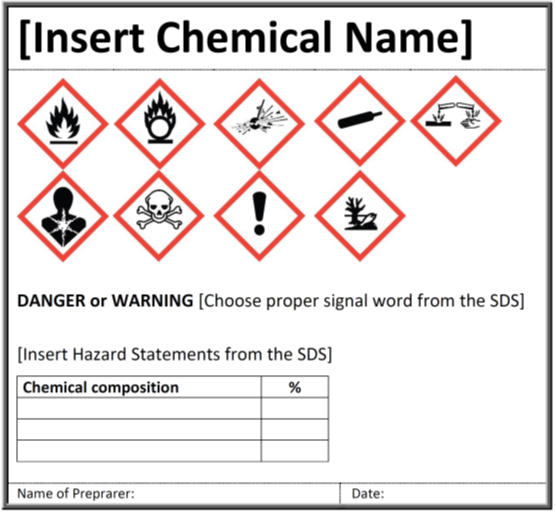
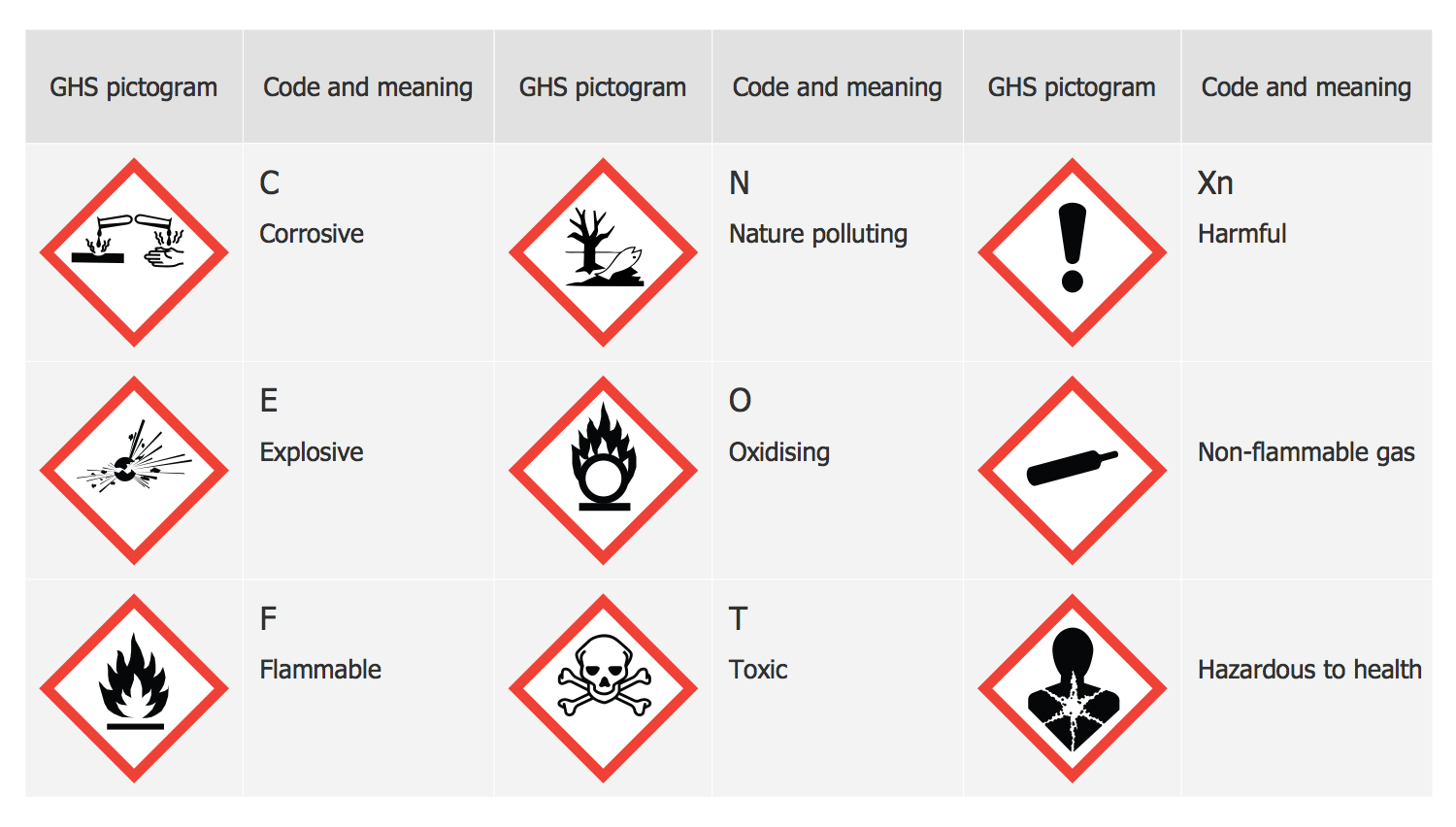

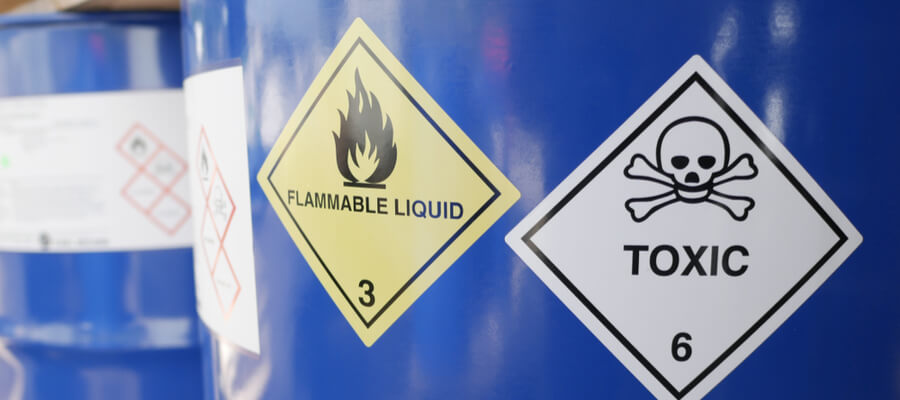
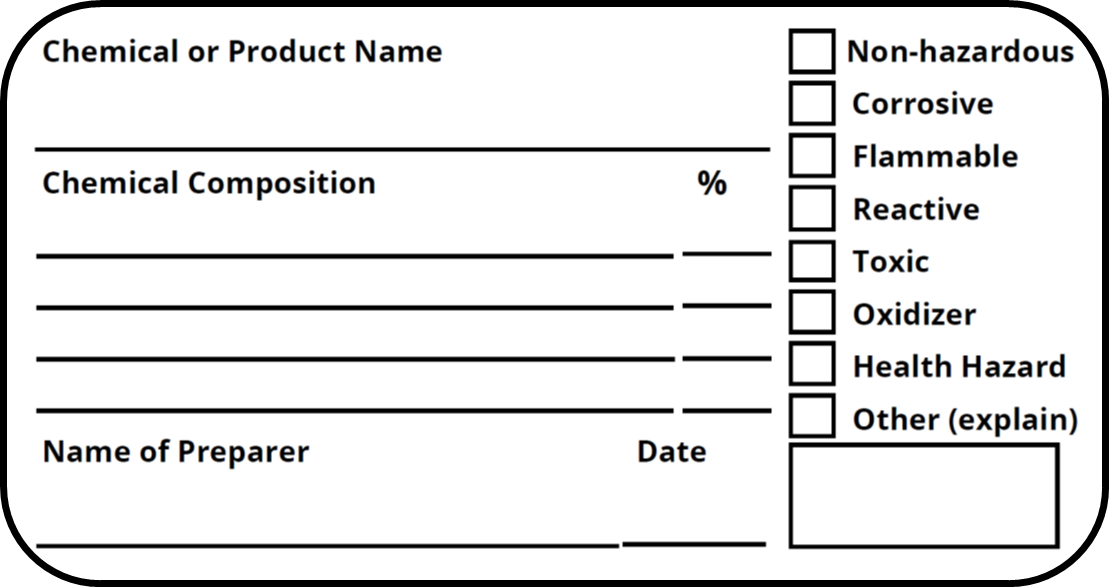
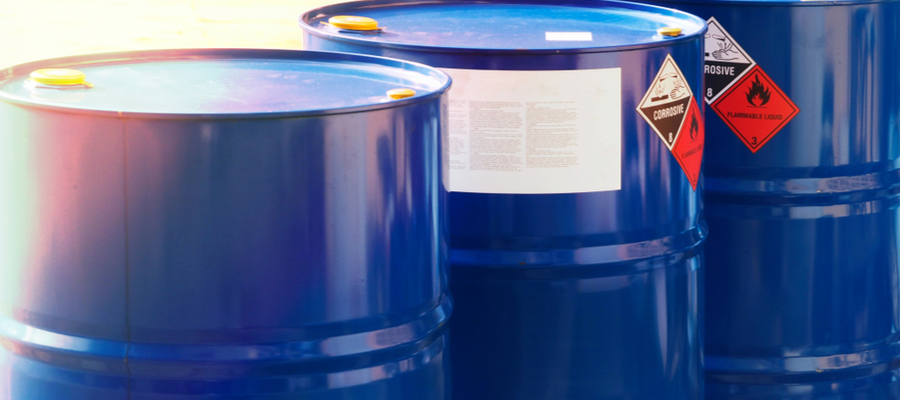
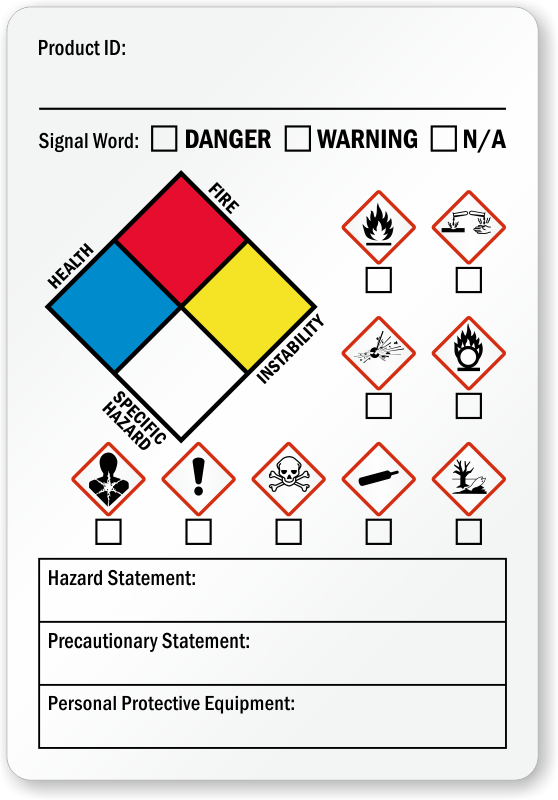
Post a Comment for "39 standard labels for chemical containers"